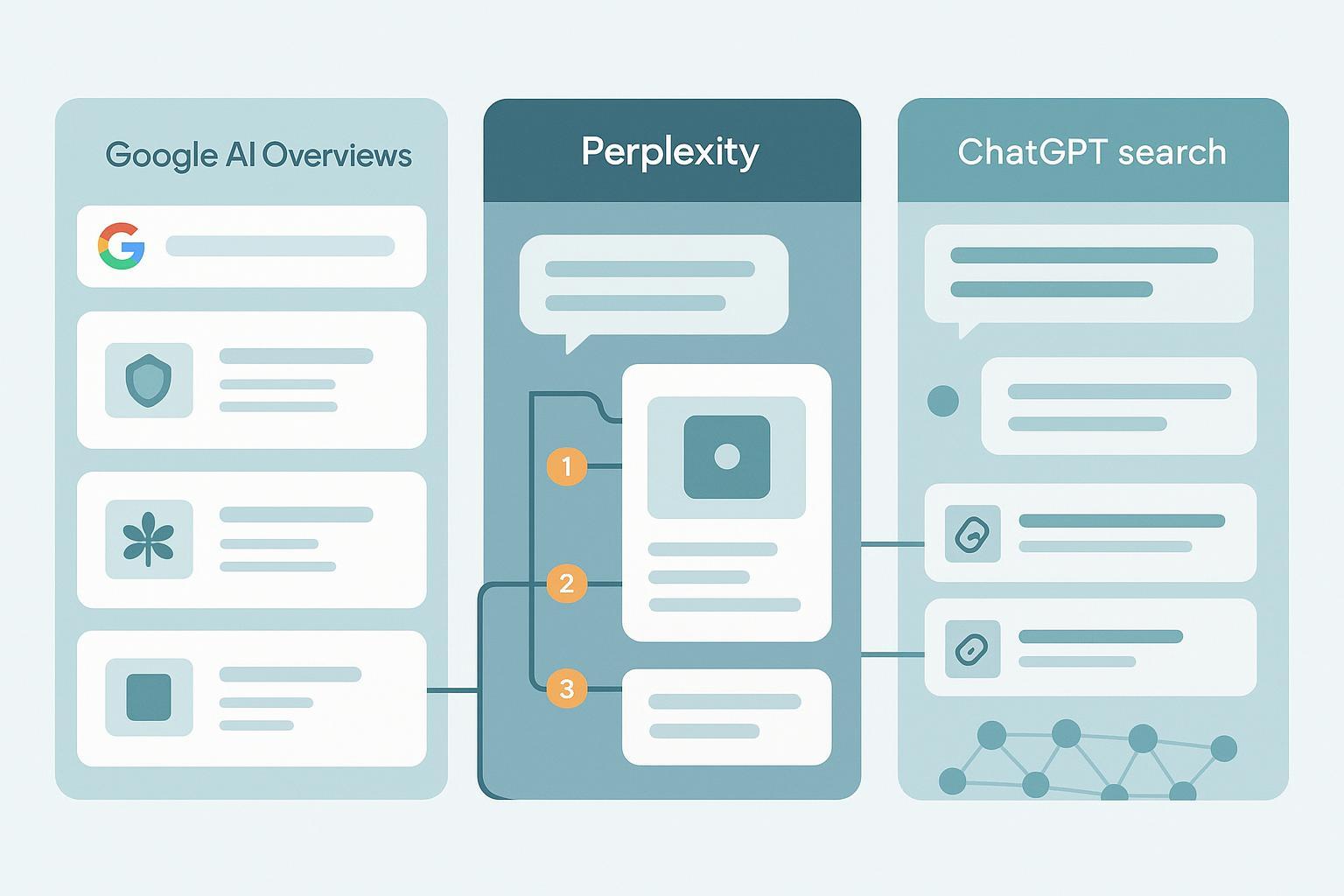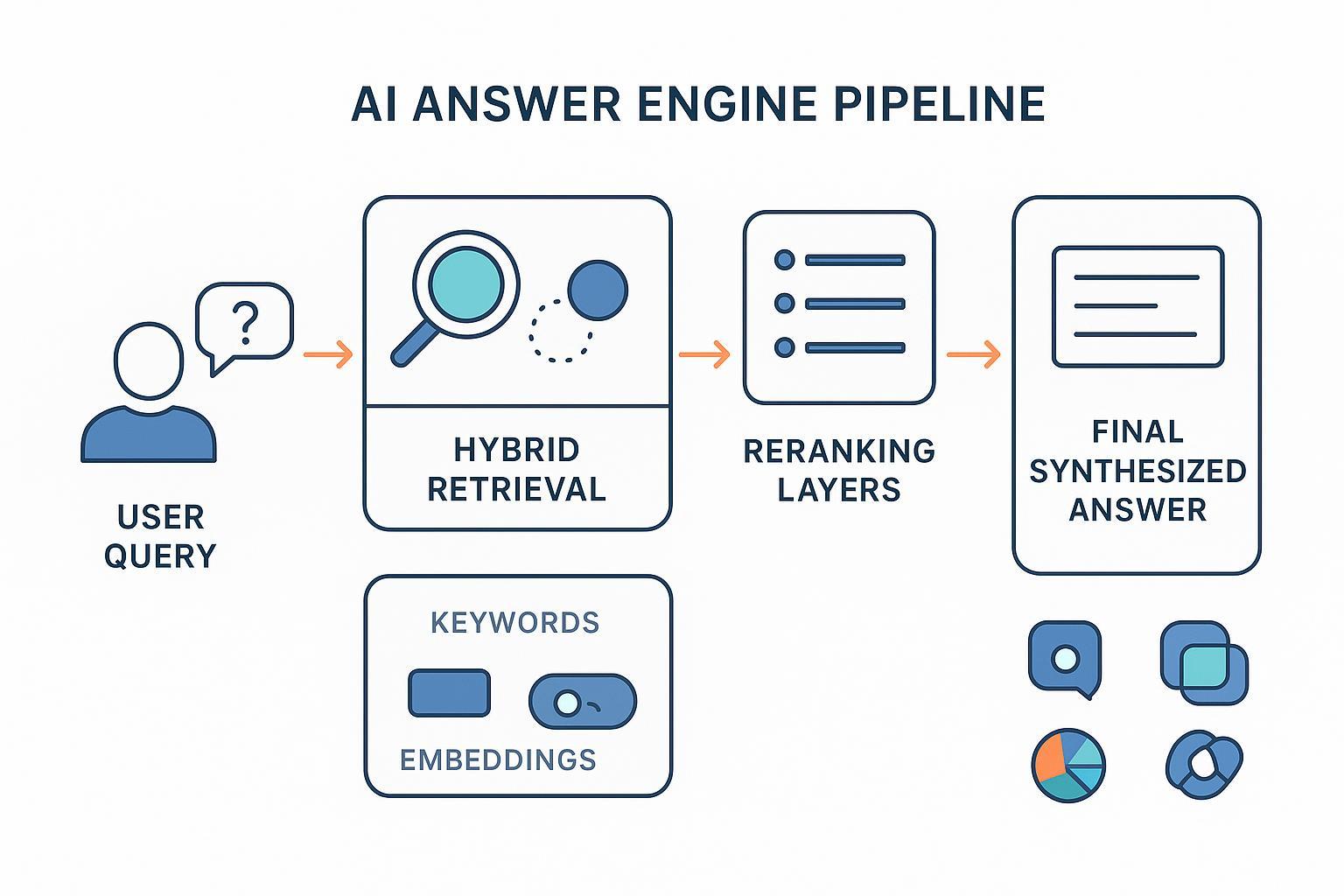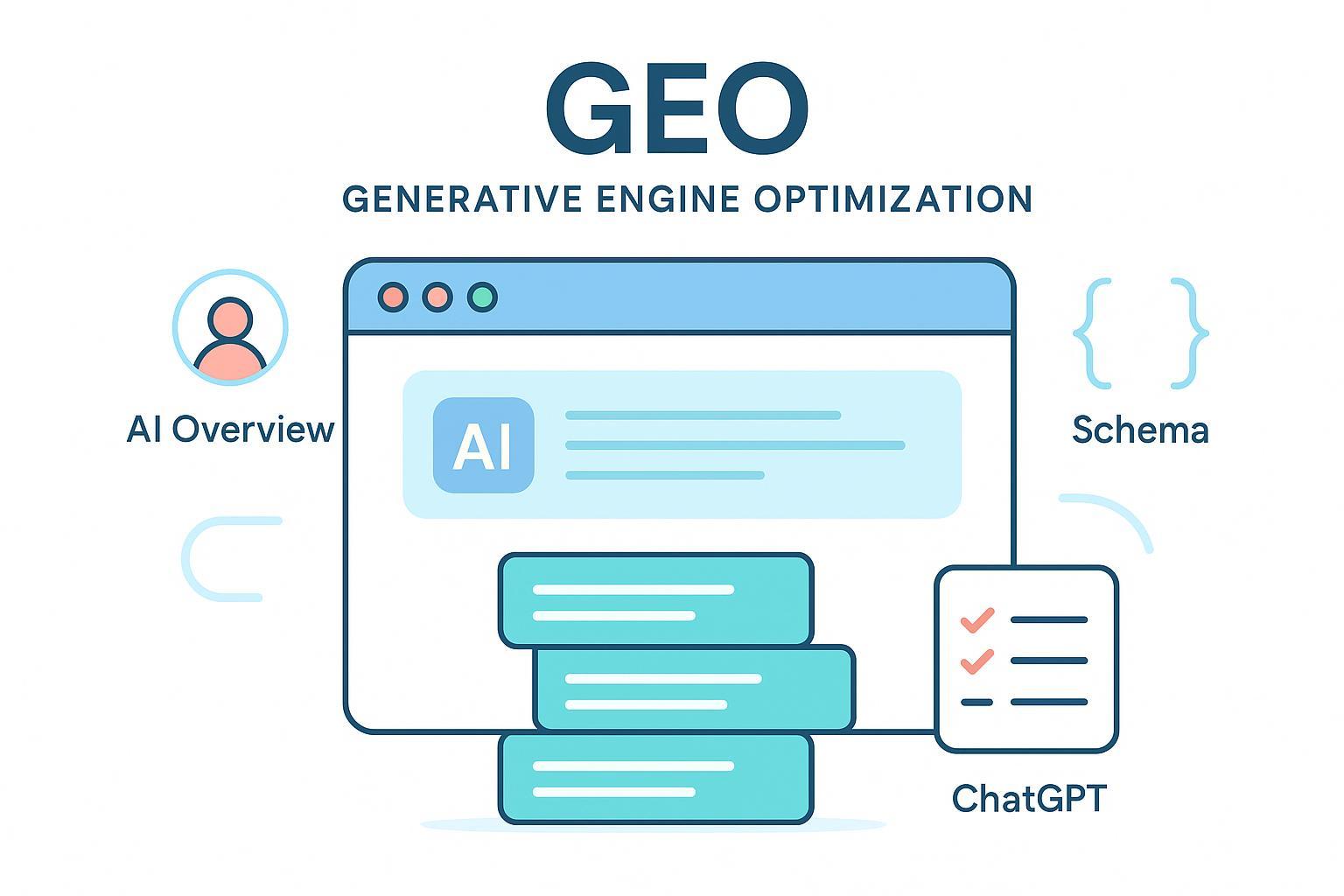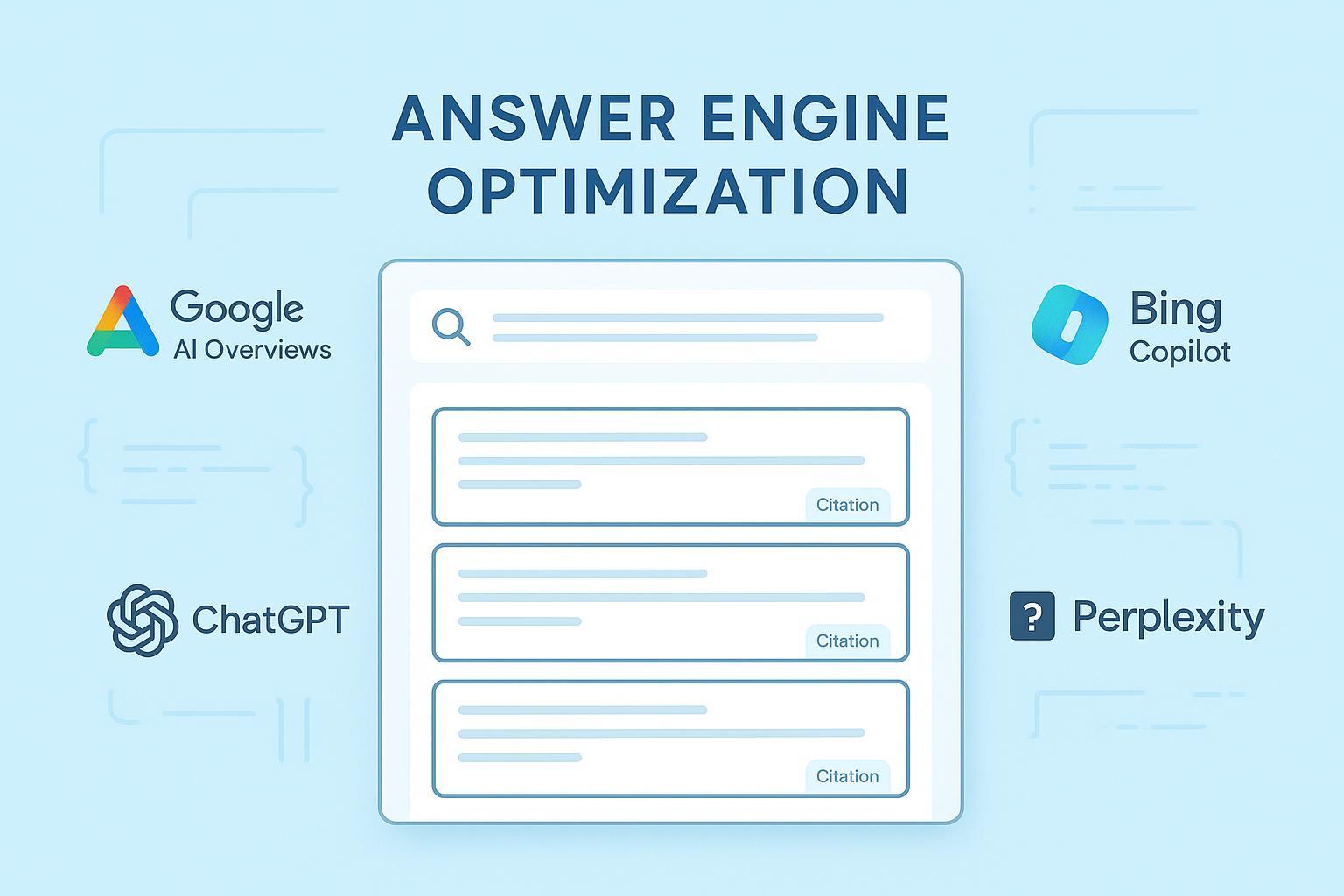Generative Engine Optimization (GEO): The Ultimate Guide to AI Answers
Master Generative Engine Optimization: Get the complete guide to GEO tactics for earning citations and visibility in AI-generated answers across engines.

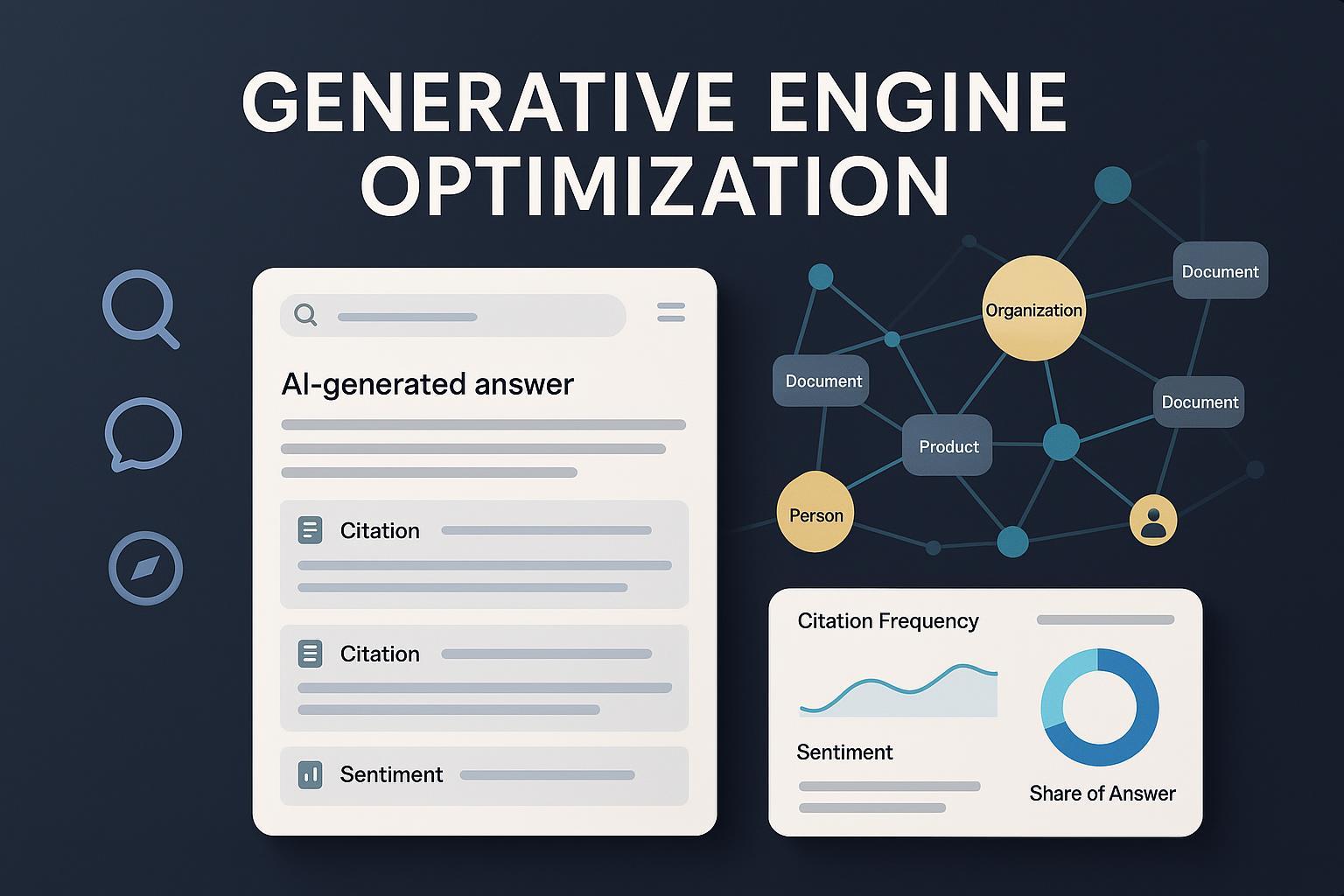
If your content strategy still assumes “10 blue links,” you’re already behind. AI-generated answers—across Google’s AI Overviews, ChatGPT Search, and Perplexity—reshape how people discover, trust, and act on information. Generative Engine Optimization (GEO) gives you a practical playbook to earn visibility and influence within those synthesized answers, without abandoning proven SEO fundamentals.
This guide is written for senior practitioners—marketing leaders, SEO/content strategists, agency pros—who need to protect and grow brand presence as AI answers absorb more queries. You’ll get platform-specific tactics, measurement frameworks, and operational workflows you can pilot this quarter.
What GEO is—and why it matters now
Generative Engine Optimization (GEO) is the practice of optimizing your content and entity presence to be included, cited, and accurately represented in AI-driven answer engines. A concise definition from 2025 frames it as adapting digital content for visibility within generative engines that produce synthesized results rather than traditional lists of links, as summarized by the Wikipedia overview of generative engine optimization (2025).
Put simply: SEO fights for rank and clicks; GEO fights for inclusion and authority inside the answer itself.
Why now?
- AI Overviews and answer engines compress research into a single panel. If you’re excluded, you lose both visibility and implied credibility.
- Citations often show up alongside summaries. Being the referenced source is a new trust gateway.
- Engines change fast. Practices that elevate clarity, evidence, and entity understanding tend to endure.
GEO doesn’t replace SEO; it builds on it. As of 2025, industry leaders emphasize integrated strategies rather than “SEO is dead” narratives—see the balanced perspective in Moz’s 2025 trends analysis and their caution against fearmongering in Moz’s “SEO is dead” rebuttal.
How generative engines source, synthesize, and cite
You’ll optimize more effectively when you understand how answers are assembled.
Google AI Overviews
- Eligibility: Your page must be indexable and eligible for a Search snippet; Google outlines this in the official “AI features and your website” guidance (updated May 2025). See Google Search Central’s AI features page.
- Mechanics: AI Overviews are generated by Google’s AI models integrated with Search. Supporting links are pulled from pages eligible for Search; ads may appear around Overviews but not inside sensitive verticals per Google Ads Help’s “About ads and AI Overviews” (2025).
- Observed behaviors: Industry studies indicate supporting links aren’t strictly the top organic rankings; Overviews will often reference pages beyond the top 10. For a 2024 source analysis, see the SE Ranking study of AI Overviews sources (Aug 2024).
- What this implies: Eligibility hinges on being indexable and “helpful”; extraction favors concise, declarative content with clear headings, definitions, lists, and citations.
ChatGPT Search (OpenAI)
- Citations: As of Feb 2025, OpenAI states that ChatGPT Search can show links to relevant web sources directly in answers. See the announcement in OpenAI’s “Introducing ChatGPT search” and supporting details in OpenAI Help: ChatGPT Search.
- Query handling: OpenAI explains that ChatGPT may rewrite your query into targeted sub-queries and send them to search providers; ongoing improvements are tracked in OpenAI’s release notes.
- What this implies: Make your pages easy to extract and verify—semantic HTML, clear summaries, explicit definitions, and authoritative citations.
Perplexity
- Citations-first UX: Perplexity emphasizes clickable citations in every answer to aid verification, per the product’s overview in Perplexity’s “Getting started” guide.
- Terms and publishing: Perplexity’s Terms of Service require clear citation when publishing outputs, underscoring the platform’s emphasis on sources—see Perplexity Terms of Service.
- Programmatic context: If you experiment at scale, Perplexity’s Search API guides are useful to understand result structures; see Perplexity Search API quickstart.
- Crawling debate: In August 2025, Cloudflare alleged Perplexity used stealth, undeclared crawlers that ignored no-crawl directives—a contested claim worth monitoring in Cloudflare’s report. Treat crawling behaviors as evolving and verify with your logs and policies.
- What this implies: Structure content for definitive, well-cited answers. Keep critical information accessible (not behind paywalls). Monitor bots and consider explicit allowances or controls as policies evolve.
GEO vs. SEO: complementary goals and practical differences
- Goal orientation:
- Content structure: SEO often optimizes for engagement and dwell; GEO prioritizes extractable, canonical statements, FAQs, summaries, steps, and tables.
- Authority signals: Both value E-E-A-T, but GEO disproportionately rewards clearly sourced facts, expert bylines, and corroboration.
- Entity clarity: GEO depends on engines recognizing and disambiguating your organization, products, and people. Use schema and consistent naming.
For a compact primer tying these distinctions together, see the industry explanation in Search Engine Land’s “What is generative engine optimization (GEO)?” (2024) and the practitioner perspectives in Moz’s GEO explainer (2025) and Backlinko’s GEO guide (2025).
Platform-by-platform playbooks
1) Google AI Overviews: earn eligibility and clarity
What to optimize:
- Indexability and helpfulness: Ensure pages are indexable, eligible for snippets, and aligned with helpful content principles. See Google’s “AI features” overview.
- Structured clarity: Use H2/H3 headings, definition boxes, bullets, and numbered steps; place concise answers near the top.
- Evidence-forward: Include date-stamped stats and authoritative citations; highlight author credentials and organizational authority. For background on quality signals, review Search Engine Land’s E-E-A-T guide (2025).
- Page types likely referenced: FAQs, glossaries, how-tos, canonical definitions, research summaries, comparison tables, and “explainer” pages.
- Technical hygiene: Core Web Vitals, SSR or hybrid rendering for heavy JS, clean sitemaps, logical internal linking.
Observed patterns to leverage:
- Supporting links may reference beyond traditional top rankings; concise, definitive passages can be favored. The SE Ranking 2024 source analysis illustrates diverse source inclusion.
Practical checklist:
- Place a 2–3 sentence canonical definition near the top.
- Use FAQPage and HowTo schema where appropriate; ensure content matches schema.
- Provide one or two quotable sentences that summarize your position.
- Add 2–3 authoritative outbound citations (primary sources), each with dates.
2) ChatGPT Search: optimize for extraction and verification
What to optimize:
- Clear summaries and definitions: Use semantic HTML; avoid burying key facts.
- Citation-ready writing: Attribute statistics and quotes to primary sources in-line.
- Crawlability: Ensure accessible content (no fragile JS rendering for core content; provide sitemaps).
- Monitoring: Track whether answers include your links for representative queries; annotate changes over time.
Why it works:
- As of 2025, OpenAI states ChatGPT Search returns answers with linked sources and may rewrite queries into targeted sub-queries before consulting search providers—see OpenAI’s announcement and Help article.
Practical checklist:
- Lead with a summary paragraph that answers the core question.
- Create FAQ sections; keep answers 50–120 words for scannability.
- Use tables for comparisons and numbered steps for procedures.
- Ensure canonical URLs and avoid duplicate/conflicting pages on the same topic.
3) Perplexity: embrace citations and definitive answers
What to optimize:
- Answer-first pages: Definitions, how-tos, and Q&A hubs.
- Reference density: Link out to authoritative primary sources; make it easy for Perplexity to display citations.
- Accessibility: Keep critical facts public; avoid gating essential explainer content.
- Bot monitoring: Review server logs; align robots directives while monitoring contested behaviors (see Cloudflare’s Aug 2025 report).
Why it works:
- Perplexity’s product emphasizes verification via clickable citations; see Perplexity’s getting started guide and the Terms of Service.
Practical checklist:
- Put definitions and answers in the first 200–300 words with headings.
- Include a compact “sources” section on the page (not at the very bottom) for primary references.
- Avoid ambiguous naming; use consistent entity labels and schema.
The tactical GEO playbook
Information architecture for LLMs
LLMs extract concise, declarative passages. Design your pages accordingly:
- Lead with a summary and canonical definition.
- Add FAQs, steps, tables, and short lists.
- Use consistent terminology; define acronyms.
- Include a small glossary for domain concepts.
Entity SEO and knowledge graph alignment
Engines rely on entity understanding to disambiguate brands, products, and people:
- Implement schema.org for Organization, Product, Person, FAQPage, HowTo.
- Add sameAs links to authoritative profiles (Wikipedia, Wikidata, Crunchbase, LinkedIn) where applicable.
- Keep NAP data consistent; maintain expert author bios with credentials.
Evidence-forward writing
- Cite primary sources and include dates near statistics.
- Write quotable sentences and canonical definitions.
- Attribute quotes to named experts and organizations.
For explainer depth and examples, practitioners often cross-reference industry overviews like Backlinko’s GEO guide (2025) and Search Engine Land’s strategies piece (2024). Use these as starting points, and anchor your content in your own data.
Technical accessibility
- Ensure indexability; validate sitemaps and robots directives.
- Favor server-side rendering or reliable hybrid rendering for heavy JS.
- Optimize Core Web Vitals; keep content accessible behind lightweight UX.
Off-page authority (digital PR)
- Secure expert quotes and data-backed mentions on trusted domains.
- Publish original research, definitions, or glossaries that others cite.
- Encourage third-party corroboration that supports your canonical statements.
Measurement and operations: KPIs, workflows, and governance
GEO impact is measurable—even if standards are still emerging. Define a representative query set (by topic and intent), track inclusion and sentiment weekly, and run monthly accuracy audits.
Core KPIs (plain-language):
- AI citation frequency: How often your site is cited in AI answers across engines.
- Platform presence/coverage: Inclusion by engine, category, and geography.
- Share of answer: Portion of supporting links in an answer attributable to your domain(s).
- Linkback rate: Frequency with which answers include clickable links to your pages.
- Sentiment: Positive/neutral/negative tone toward your brand in answers.
- Accuracy rate: Percentage of answers that correctly represent your facts and positions.
- Trend lines and alerting: Week-over-week shifts in inclusion and sentiment.
A practical workflow: monitor and improve AI citations and sentiment
On representative queries (e.g., “best [category] for [use case],” “how to [task]”), log which answers include your domain and how they portray you.
- First, set up tracking across engines and topics.
- Second, review answer excerpts and citations; flag inaccuracies or missing facts.
- Third, prioritize content updates: add canonical definitions, clarifying FAQs, and primary-source citations.
- Fourth, recheck within one to two weeks and monitor trend lines.
Disclosure: Geneo is our product. Geneo can be used to monitor multi-engine AI citations, sentiment, and trends, and to suggest content improvements based on observed gaps. Keep usage neutral and replicable: define a query set, log inclusion and sentiment over time, and act on the insights.
For readers who want a compact definition and KPI taxonomy, see our explainer What is Generative Engine Optimization (GEO)?. For cross-industry examples of what practitioners changed and measured, review 2025 AI Search Strategy Case Studies.
Operational cadence suggestions:
- Weekly: Track inclusion and sentiment for top queries; log citation changes.
- Monthly: Run accuracy audits; update entity and FAQ pages; execute PR outreach for corroborating mentions.
- Quarterly: Refresh content and schema; review governance with legal/comms for risk-sensitive topics.
Risk, ethics, and compliance
- Avoid manipulative tactics; follow each platform’s policies and webmaster guidelines.
- YMYL caution: For health, finance, or legal content, elevate expert authorship, references, and disclaimers; enforce rigorous QA.
- Hallucination management: Write precise, unambiguous statements; publish corrective FAQs and myth-busting pages; use available feedback tools to request corrections.
- Crawling controls: Monitor bot activity and adjust robots directives cautiously; keep critical facts indexable to avoid hiding your best evidence.
For evolving policies and quality standards, practitioners often consult official documentation like Google’s AI features page (2025), OpenAI’s ChatGPT Search announcement (2025), and Perplexity’s product and TOS pages. Treat behaviors as subject to change; verify prior to major campaigns.
Enterprise scaling: workflows, SOPs, and governance
If you manage multiple brands, languages, or regions, create GEO SOPs that standardize:
- Query set definition by market and intent category.
- Page archetypes: explainer/definition, FAQ, how-to, comparison, glossary.
- Schema baselines and author credential requirements.
- Citation practices and outbound linking standards (primary sources first).
- QA checkpoints: pre-publish factual review; post-publication AI answer audits; accuracy escalation path.
- Ownership: content, SEO, PR, legal/comms for risk-sensitive topics.
- Dashboards and alerting: inclusion/sentiment trends; accuracy flags; remediation SLAs.
Use lightweight templates in your CMS to scale page archetypes. Keep governance nimble—update SOPs quarterly as engines evolve.
Mistakes to avoid (and what didn’t work)
- Treating GEO like a keyword stuffing exercise: LLMs favor clarity and evidence, not repetition.
- Hiding critical facts behind paywalls or heavy JS: If engines can’t access your canonical statements, they won’t cite you.
- Over-optimizing for one engine: Balance efforts; Google, ChatGPT, and Perplexity behave differently.
- Ignoring off-page corroboration: Without third-party validation, your claims carry less weight.
- Letting accuracy drift: Unchecked pages fuel hallucinations and reputational risk.
Frameworks to guide action
The GEO Optimization Ladder
- Foundation: Indexability, Core Web Vitals, semantic HTML.
- Clarity: Canonical definitions, summaries, FAQs, steps, tables.
- Evidence: Primary-source citations, dates, expert bylines.
- Entity: Schema.org, sameAs links, consistent naming.
- Distribution: Digital PR and third-party corroboration.
- Operations: KPIs, dashboards, weekly/monthly audits.
At the end of each rung, ask: “Is this extractable, verifiable, and unambiguous?”
The AI Visibility Pyramid
- Base: Technical accessibility and entity clarity.
- Middle: Structured, evidence-forward content.
- Top: Off-page authority and operational measurement.
Use these models to prioritize work—80/20 applies. For many brands, improving entity clarity, structured summaries/FAQs, authoritative sourcing, and distribution on trusted domains drives outsized gains.
What to do next:
- Pick three high-intent topics. Create or revamp an explainer + FAQ for each.
- Add schema and canonical definitions; include 2–3 primary sources.
- Monitor inclusion and sentiment weekly; adjust content accordingly.
Alternatives and balanced tooling
Beyond our own product, teams evaluate:
- Platform-native signals: Google Search Console (indexability, coverage), and any evolving features that surface AI Overviews-related insights.
- Third-party monitors: Consider coverage across engines, alerting, sentiment analysis, historical tracking, and exportability when selecting.
- Internal analytics: Annotate GEO-related content changes and track downstream conversions.
For a survey of the tooling landscape, practitioners sometimes reference neutral roundups such as Contently’s 2025 overview of GEO tools to understand categories and selection criteria.
Closing and next steps
If you’ve read this far, you have everything needed to pilot GEO: define your query set, structure content for extraction, assert your evidence, and measure inclusion and sentiment.
If you want to monitor and improve visibility across AI answers without building a stack from scratch, you can try Geneo’s multi-engine monitoring and content suggestion workflows—start with a free trial and evaluate against your KPIs.
For ongoing updates and case examples, check our blog hub at Geneo Blog. And if you need the compact definition of GEO and KPI taxonomy while building internal docs, bookmark What is Generative Engine Optimization (GEO)?.
Finally, remember: the engines change fast. Bind claims to primary sources, date-stamp your evidence, and revisit your GEO SOPs quarterly. That rhythm keeps your brand present, cited, and trusted within AI-generated answers.


